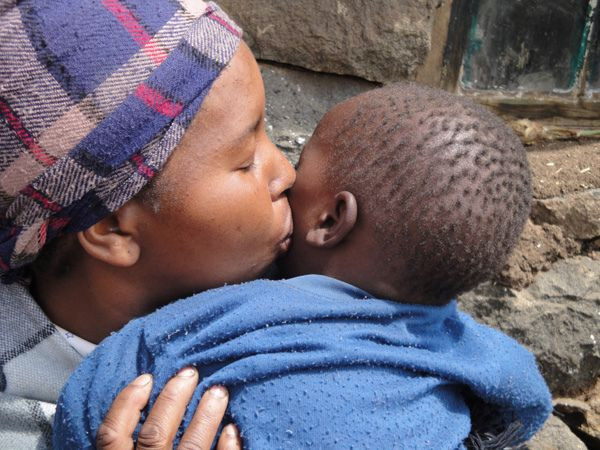Ten Innovations That Can Save Millions Of Lives In Developing Nations: UN And PATH Hopes To Fight Maternal And Children Deaths Worldwide

Ten new innovations chosen by international experts may save up to 7.5 million lives of women and children, and have the possibility of being implemented with the assistance of international humanitarian groups, by the end of 2015.
At the United Nations General Assembly this week, a PATH report introduced these new innovations in front of a panel that included the Prime Minister of Norway Jens Stoltenberg, Bill Gates, Sheryl Sandberg of Facebook, and Judith Rodin of the Rockefeller Foundation.
6.9 million mothers and children under the age of 5 die annually worldwide. 50 percent of maternal deaths are caused by postpartum hemorrhage and pre-eclampsia or eclampsia, which causes fatal seizures during pregnancy. The ten innovations below focused sharply on maternal and child deaths, and looked into ways to prevent fatalities from malaria or diarrhea in children under 5, as well as newborn deaths caused by neonatal infection or other disorders. The majority of these deaths occur in remote parts of undeveloped nations.
These ten innovations were chosen out of hundreds of other competitors due to their efficacy, flexibility, and accessibility – as well as their ability to be developed and distributed inexpensively.
"If we are going to make further progress on reducing death and illness of poor women, their newborns and children, we will need to ensure access to these innovations in hard to reach pockets of very poor, marginalized populations,” Dr. Tore Godal, special advisor to the Prime Minister of Norway, said.
- Kit Yamoyo will package anti-diarrheal treatment with zinc and oral rehydration solution into a container that will fit over Coca Cola bottles. Designed by Colalife, the Kit Yamoyo (‘Kit of Life’) also includes a bar of soap and chose Coca Cola as a distributor due to its ability to reach remote areas in sub-Saharan Africa, where most diarrhea deaths occur.
- The Anti-Shock Garment aims to fight post-delivery hemorrhage, which is the leading killer of mothers, by being used to wrap the woman’s lower part of her body to prevent excessive bleeding. The Anti-Shock Garment may save the lives of women while they are rushed to emergency care. Originally very expensive to produce, the garment will hopefully become more affordable with the help of PATH.
- Low-Cost Antiseptic, or chlorhexidine, can save up to hundreds of thousands of babies by preventing infections that often occur from newly cut umbilical cords.
- Rotovac is a rotavirus-related diarrhea vaccine, which can help to wipe out diarrhea deaths. It can be made available by 2015 and may only cost $1 a dose.
- The Backpack-PLUS is what it sounds like: a backpack filled with essentials. Developed by a collaboration between UNICEF, Save the Children and others, the Backpack-PLUS will contain zinc, oral rehydration solution, antibiotics and anti-malarial drugs – items that will assist community health workers in doing their job.
- Helping Babies Breathe is a program that teaches health workers to ensure that every baby who is born is able to breathe during the “Golden Minute” after birth. The program aims to ensure that babies are delivered safely in any setting with limited supplies. In Tanzania, the program was able to reduce newborn mortality by 47 percent.
- Bubble CPAP can reduce infant mortality by forcing oxygen into babies’ lungs – especially those who struggle with pneumonia.
- Phone Oximeter is a mobile phone-based device monitoring blood oxygen levels. This can assist health workers in diagnosing pre-eclampsia as well as pneumonia. The device will bring the practice of pulse oximetry, which measures hemoglobin in the blood, into non-hospital settings.
- Sayana Press is an easily used and inexpensive “injectable contraceptive” that will prevent pregnancy for three months after a single-dose injection. This aims to give women more spacing in between births, as pregnancies one after another can cause be risky for both the child and woman.
- Magnesium sulfate currently treats severe pre-eclampsia and eclampsia – a condition that may cause pregnant women to experience seizures. Though it is currently a complex treatment, the WHO and PATH are collaborating to develop a simpler and cost-effective form of treatment.
The estimated cost of developing and implementing these treatments and products could be around $1 billion.
"Delivering healthcare in the last mile is a tough job,” Erica Kochi, Innovation Advisor of UNICEF, said. “Frontline health workers face broken supply chains, huge distances and limited training. Innovation has to start with the end user.”



























